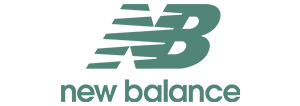Amazon FBM Fees in 2024: A Complete Guide For Amazon FBM














Amazon stands out as one of the most challenging and competitive marketplaces worldwide, where sellers face a challenge of competing with countless other retailers and managing their fulfillment processes.
While most sellers opt for Fulfillment by Amazon (FBA) to store and ship products from Amazon’s warehouses, there’s an alternative. In this article, we will take a look at Amazon FBM, how much it costs to become one, as well as share some of the best practices for those new in the field.
What is Amazon FBM?
Amazon FBM, or Fulfillment by Merchant, is a selling method where the seller takes care of storing, packing, and shipping their products directly to customers.
FBM is known for giving sellers more control over their inventory and shipping. It’s a great option for those who want to manage their own logistics or have specific shipping needs, allowing them to set their shipping rates and delivery times.
How to Sell on Amazon FBM?
Step 1: Prepare your product listings
Create product listings for the items you want to sell on Amazon. Include details like descriptions, images, bullet points, prices, etc.
Step 2: Select your fulfillment method
While setting up your listings, go to Inventory > Add a product, and select “I will ship the item myself” in the Fulfillment Channel section. This shows that you will handle shipping instead of using Amazon’s FBA service.

Step 3: Manage Your Inventory
With FBM, you’re responsible for storing your own inventory, whether it’s in your home, a warehouse, or any space where you can keep your products until they sell.
Step 4: Fulfill Orders
When a customer purchases your product, you’ll need to pack and ship it promptly. It’s important to prepare the package well and ensure it goes out on time.
If you’re unsure about how to ship your order, start by selecting a carrier. In the U.S., you have several options, including:
1. USPS
2. FedEx
3. UPS
4. DHL Express
5. Aramex
6. Fidelitone
7. Innovel Solutions, etc.
Step 5: Provide Customer Support
As the seller, you’ll manage all customer inquiries and issues. This includes answering questions and resolving any problems that come up.

When to choose FBM for Product Fulfillment
FBM is better for:
1. Small-Volume products – If your sales volume is low, using FBM can be more cost-effective. You can manage inventory more efficiently and avoid the higher costs associated with using FBA for smaller quantities.
2. Low-profit products – For products with low-profit margins, FBM gives you better control over costs, which can help you maximize your profits by reducing fulfillment fees.
3. Hard-to-ship products – If your items are bulky, fragile, or have special shipping requirements, FBM gives you control over how to package and ship them safely.
4. Exclusive products – For unique or exclusive items that you want to manage closely, FBM allows you to maintain direct oversight over the fulfillment process.
5. Handmade products – If you create handmade items, FBM lets you handle the fulfillment personally, ensuring that your products are packaged and shipped the way you want.

Benefits of Amazon FBM
1. Better Control
Sellers gain a deeper understanding of their operations and maintain control over their business. Managing inventory and finances directly helps them run their business more effectively in the long term.
2. Flexibility in Operations
FBM allows sellers to run their businesses as they see fit. They can easily scale without worrying about extra shipping to warehouses or rising FBA fees.
3. Integrated Retail Options
Sellers can manage both online and offline stores using the same inventory. This setup eliminates extra shipping costs, as they control where their inventory is stored.
4. Higher Profit Margins
Without FBA fees, sellers keep more of their profits. They can choose cost-effective warehousing and shipping options, which is especially beneficial for larger products with lower margins.
5. Building an Independent Brand
FBM sellers interact directly with customers, giving them valuable insights into customer needs and feedback. This direct engagement helps them improve their offerings.
6. Less Risk from Policy Changes
FBM sellers avoid the headaches of Amazon’s frequent policy changes and long-term storage fees, providing more stability for their business.
7. Reduced Paperwork
FBM sellers don’t have to deal with the tax complexities and paperwork that come with FBA, simplifying their operations.
How Much Does Amazon FBM Cost?
Selling with Amazon FBM involves various fees and expenses. FBM sellers face lower fees compared to FBA sellers, but they still need to pay Amazon’s selling fees. Additionally, they are responsible for logistics costs when using third-party services.
Amazon Selling Plan fees
Individual Selling Plan
Cost: $0.99 per item (plus referral fees)
* Features: No monthly fee and basic selling functions.
Professional Selling Plan
Cost: $39.99 per month
* Features: Includes all features of the Individual plan, eligibility for the Buy Box (which can boost sales), access to advanced selling tools, and detailed sales analytics.
Amazon Referral Fees
Sellers incur a referral fee for each item sold. In some categories, there’s a minimum per-item referral fee that applies, meaning sellers pay either the standard referral fee or the minimum, whichever is higher.
Amazon calculates the referral fee based on the total sales price, which includes the item price and any delivery or gift wrapping charges, but excludes taxes.
Referral fees also differ by category, as listed below:
Fee categories | Referral fee percentages | Applicable minimum referral fee |
Amazon Device Accessories | 45% | $0.30 |
Amazon Explore | 30% for Experiences | $2.00 |
Automotive and Powersports | 12% | $0.30 |
Baby Products | 8% for products with a total sales price of $10.00 or less, and 15% for products with a total sales price greater than $10.00 | $0.30 |
Backpacks, Handbags, and Luggage | 15% | $0.30 |
Base Equipment Power Tools | 12% | $0.30 |
Beauty, Health and Personal Care | 8% for products with a total sales price of $10.00 or less, and 15% for items with a total sales price greater than $10.00 | $0.30 |
Business, Industrial, and Scientific Supplies | 12% | $0.30 |
Clothing and Accessories | 5% for products with a total sales price of $15.00 or less 10% for products with a total sales price greater than $15.00 and less than or equal to $20.00 17% for products with a total sales price greater than $20.00 | $0.30 |
Compact Appliances | 15% for the portion of the total sales price up to $300.00, and 8% for any portion of the total sales price greater than $300.00 | $0.30 |
Computers | 8% | $0.30 |
Consumer Electronics | 8% | $0.30 |
Electronics Accessories | 15% for the portion of the total sales price up to $100.00, and 8% for any portion of the total sales price greater than $100.00 | $0.30 |
Everything Else | 15% | $0.30 |
Eyewear | 15% | $0.30 |
Fine Art | 20% for the portion of the total sales price up to $100.00, 15% for the portion of the total sales price greater than $100.00 up to $1,000.00, 10% for the portion of the total sales price greater than $1,000.00 up to $5,000.00, and 5% for the portion of the total sales price greater than $5,000.00 | — |
Footwear | 15% | $0.30 |
Full-Size Appliances | 8% | $0.30 |
Furniture | 15% for the portion of the total sales price up to $200.00, and 10% for any portion of the total sales price greater than $200.00 | $0.30 |
Gift Cards | 20% | — |
Grocery and Gourmet | 8% for products with a total sales price of $15.00 or less, and 15% for products with a total sales price greater than $15.00 | — |
Home and Kitchen | 15% | $0.30 |
Jewelry | 20% for the portion of the total sales price up to $250.00, and 5% for any portion of the total sales price greater than $250.00 | $0.30 |
Lawn and Garden | 15% | $0.30 |
Lawn Mowers and Snow Throwers | 15% for products with a total sales price of up to $500.00 8% for products with a total sales price greater than $500.00 | $0.30 |
Mattresses | 15% | $0.30 |
Media – Books, DVD, Music, Software, Video | 15% | — |
Musical Instruments and AV Production | 15% | $0.30 |
Office Products | 15% | $0.30 |
Pet Products | 15%, except 22% for veterinary diets | $0.30 |
Sports and Outdoors | 15% | $0.30 |
Tires | 10% | $0.30 |
Tools and Home Improvement | 15% | $0.30 |
Toys and Games | 15% | $0.30 |
Video Game Consoles | 8% | — |
Video Games and Gaming Accessories | 15% | — |
Watches | 16% for the portion of the total sales price up to $1,500.00, and 3% for any portion of the total sales price greater than $1,500.00 | $0.30 |
Amazon Closing Fees
If you sell in the categories of Books, DVD, Music, Software & Computer/Video Games, Video Game Consoles, and Video Game Accessories, Amazon charges a closing fee of $1.80 for each item sold.
Changes to Amazon FBM On-Time Delivery Rate (OTDR)
Amazon will adjust the On-Time Delivery Rate (OTDR) policy, effective September 25, 2024, to drive improvement indelivery efficiency andareduction inlate deliveries.
The new policy requires sellers to have at least 90% of OTDR for their seller-fulfilled products if those products are to remain listed on Amazon. Additionally, while the recommended standard for providing an exceptional customer experience is now set at an OTDR of 95% or higher, only those not reaching the 90% threshold are expected to be restricted from listing seller-fulfilled products.
Note that this policy does not impact Fulfillment by Amazon (FBA) services, where sellers are not responsible for the on-time delivery promised of FBA orders.
In addition, the way OTDR is calculated has been modified. It now measures the percentage of tracked seller-fulfilled items delivered on or before the “Deliver by” date that the seller originally promised, excluding any subsequent extensions of that promise. Previously, OTDR calculations included those extensions, but the new method aims to more accurately reflect delivery performance.
Amazon FBM vs FBA: Which One is Better?
Studies inficate that nearly 82% of Amazon Sellers use FBA as their fulfillment method, and only around 14% stick to FBM. Some sellers prefer to use both, but it doesn’t change the fact that the preference is mainly given to Amazon FBA rather than FBM.
Is there any real reason for that? Let’s compare both and find out!
Pros of Amazon FBA
1. Easier to scale
By allowing the sellers to send their products to Amazon to act on their behalf with the storage, packaging, shipping, and customer support, FBA makes business management convenient.
As a FBM seller, you are also obliged to pay individual shipping costs, but you don’t pay those fees when you use Amazon FBA hands-off approach is particularly beneficial for sellers aiming to scale their business while not facing the burden of controlling the logistics, handling returns, maintaining customer service, etc.
2. Ability to sell items faster at higher prices
Amazon provides an incentive for products fulfilled through FBA by increasing their visibility and attractiveness to customers. Items fulfilled by Amazon often qualify for Prime eligibility, which appeals to Prime members who value fast shipping above everything else.
This allows for faster sales and the ability to set higher prices due to the greater value perception and trust associated with the Prime badge.
3. Under $20 items are more profitable
Amazon’s overall strategy leans towards favoring FBA items in the Buy Box, especially for products that are under $20 where the platform’s logistical advantages can be utilized to their fullest.
4. Pretty much every item is FBA friendly
FBA’s infrastructure is designed to accommodate a wide range of products, and Amazon’s extensive network of fulfillment centers, coupled with its strong operational mechanisms, ensures that just about any product is stored and shipped efficiently.
Cons of Amazon FBA
1. Long check-In times
The check-in times for FBA are notoriously long, and it might take a product from one to three weeks before it is processed and becomes available for sale after arriving at Amazon’s warehouses.
This prevents the seller from reacting quickly to market demand and adjusting the inventory level during peak shopping periods.
2. Slower to get feedback
The time it takes for products to be checked in and listed on Amazon means that sellers receive slower feedback on their sales performance
3. Sellers have to buy more of each product than they need
To make the most of FBA’s bulk shipment advantages, sellers often need to invest in larger quantities of stock. This can often lead to higher upfront costs and increased financial risk, especially for new or small businesses.
Pros of Amazon FBM
1. Better for beginners
FBM is ideal for beginners as it allows sellers to start with smaller quantities of stock, hence reducing the risk in terms of initial investment. This is very important for a beginners who would like to test consumers’ interest in their products and adjust their strategies accordingly without being bound to large inventory commitments.
2. Faster cash flows & learning
With FBM, sellers benefit from faster cash flow since they don’t have to wait the typical 1-3 weeks for check-in times associated with FBA. This means quicker turnover of inventory and more immediate returns on investment.
It is also easier to learn how to operate on Amazon effectively and serve your customers well, as sellers can derive insights more quickly through direct interactions with client feedback.
3. Quicker restocking
The ability to restock quickly helps sellers keep up with demand fluctuations, especially during peak seasons like Q4.
Cons of Amazon FBA
1. Harder to scale
Scaling a business with FBM can be challenging due to the manual nature of fulfilling each order.
Once sales volumes rise, so does the logistical burden, requiring more resources and operational capacity to manage effectively. This can limit growth potential unless additional infrastructure is developed. That may limit the growth potential unless additional infrastructure is developed.
2. The need to process each order independently
This is one of the major drawbacks of FBM — sellers have to handle all orders themselves. This can be time-consuming in nature and very labor-intensive, taking focus away from other business activities such as marketing or product development.
3. Not every item is FBM friendly
Some products just aren’t well-suited for FBM due to weight, size, or shipping complexity. So, products that need special handling or those whose shipping cost is too high may not be economically viable for FBM.
TOP 5 Best FBM Practices from Amazon
Here are key tips from Amazon for successfully selling through FBM:
1. Utilize Amazon’s ‘Buy Shipping’ Feature
Purchase shipping directly through Amazon to ensure timely orders and tracking numbers. To use this feature, go to Orders > Manage Orders, click ‘Buy Shipping’ for the relevant order, confirm the details, and print the label. This automatically confirms the order and sends the tracking number to the customer.
2. Always Include Tracking Numbers
Amazon requires tracking numbers for all orders. If you use Amazon’s shipping, the tracking number will be generated and sent to the customer automatically.
3. Ensure Timely Delivery
Make sure that you confirm, pack, and ship products promptly. If you’re selling items with Premium or Prime shipping, they must arrive by the guaranteed date.
4. Establish a Clear Return Policy
Include clear return instructions and a valid return address in your packaging. As an FBM seller, you must handle all returns, and you cannot refuse a customer’s return request.
5. Follow Amazon’s Dropshipping Policy
If you’re a dropshipper, make sure to be the seller of record for your products. Identify yourself on all packing slips and invoices, remove any third-party identifiers, and handle customer returns yourself.
Final Thoughts
Amazon’s Fulfilled by Merchant (FBM) offers a dependable and effective choice for businesses seeking to maintain control over their fulfillment processes and customer interactions. Evidence suggests that sellers incorporating FBM into their strategies often experience greater success over time.
We hope this article has given you a better understanding of Amazon FBM service. If you’re left wondering which fulfillment method aligns with your business needs, reach out to us! Our team of experts at Weby Corp is ready to assist you in evaluating your options and choosing the most suitable fulfillment strategy.
Table Of Glossary
FAQ
Consider opting for Amazon FBA if your brand:
- Requires warehousing space
- Prefers to outsource fulfillment tasks
- Lacks in-house customer service or returns management
- Aims to utilize the Prime badge
On the other hand, Amazon FBM may be more suitable if you:
- Have your own warehousing facilities
- Are dealing with large, heavy, or temperature-sensitive shipments
- Seek a responsive and specialized fulfillment partner
- Use your branded packaging instead of Amazon’s standard boxes and wish to craft a unique unboxing experience
- Prefer to avoid complicated pricing structures and storage fees
One of the key advantages of using Amazon FBA is that your products are typically eligible for Prime benefits. This ensures that Prime members can order and receive items fulfilled by Amazon within a short span of 2-3 days.
However, this perk is not available to FBM sellers unless they qualify for Seller Fulfilled Prime.



